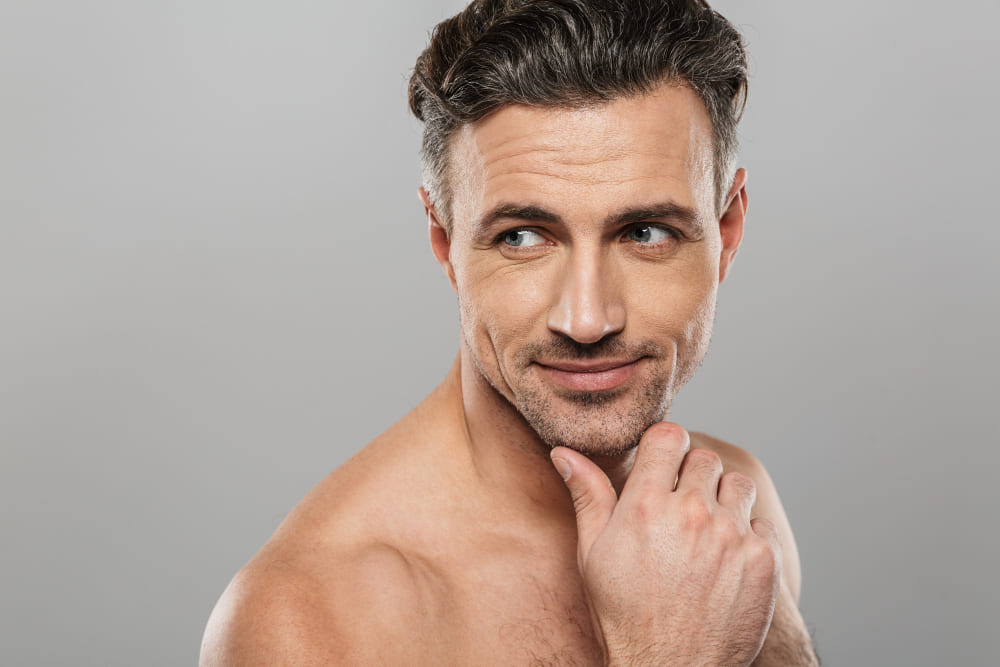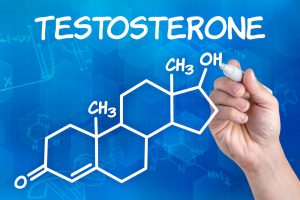CONTENTS

Navigating the Evolution: Unveiling the Stages of Facial Hair Growth
The beard growth journey is a wild ride that every gentleman goes through. Much like the evolution of life itself, the stages of facial hair growth can be complex, mysterious, and sometimes downright frustrating. However complex it is, it is inevitable.
But fear not, as we’re here to guide you through this hairy voyage, unveiling the stages of facial hair growth and providing helpful tips along the way.
So are you ready to get enlightened by our guide? Let’s get started!
Beard Growth Factors
There are several beard growth factors, from age to exercise. Here are the factors:
Age

During puberty, commonly between the ages of 12 and 16, most boys will start to notice a little bit of fuzz on their faces. This is because testosterone levels begin to rise during these years, which triggers the development of secondary sexual characteristics, like facial hair.
In your late teens and early twenties, this fuzz gradually transforms into a more noticeable beard and peaks in your late twenties or early thirties, thanks to a combination of genetics and hormones.
Hormones

Hormones are prominent to stimulate beard growth, particularly testosterone and dihydrotestosterone (DHT).
The higher levels of testosterone, the higher the chance of growing more facial hair. On the other hand, DHT, derived from testosterone, is even more potent and plays a key role in developing facial hair. If your body is more sensitive to DHT, you’re likely to grow a beard at a younger age and have a thicker beard overall.
Genetics

Your genes, inherited from both your mother and father, dictate your hair growth. Similarly, your genes decide your beard’s color, which can differ from your head hair. The rate at which your beard grows, its growth pattern (whether full or patchy beard), and the texture (straight, wavy, curly) are all determined by genetics.
Diet

A healthy diet affects your overall’s body health, including hair growth. Important nutrients like proteins, vitamins, minerals, omega-3, and other micronutrients play a big role in stimulating beard growth.
Proteins build blocks of hair keratin. Meanwhile, vitamins and minerals like Biotin, Vitamin E, iron, zinc, and selenium promote hair growth by aiding in keratin production and enhancing blood circulation to hair follicles.
Hydration and healthy fats, such as Omega-3 fatty acids, improve the health of hair follicles, encouraging fuller beard growth.
Exercise

Regular physical activity increases blood circulation, which can stimulate the hair follicles in your face, promoting healthier and potentially faster beard growth. Exercise, especially resistance and high-intensity interval training, has been shown to increase testosterone levels.
Furthermore, exercise can help reduce stress levels, which can disrupt hormonal balance and potentially slow down hair growth or even cause hair loss—hence its importance!
The Stages of Beard Growth
Scientifically, there are four stages of facial hair growth. If you want to grow your beard to the desired length optimally, it is important to understand each stage.
Anagen
Anagen is the first stage of beard growth, where hair follicles rapidly produce cells, leading to beard growth. The phase typically lasts 2 to 6 years, varying based on genetics. During this time, proper diet, exercise, and grooming can promote healthier and potentially longer beard growth.
Catagen
After the anagen phase, the catagen phase is the second stage of beard growth, lasting around ten days. In this phase, growth sections of hair follicles shrink significantly—up to 70%. This prepares the follicle for future growth, which is the next stage: the telogen phase.
Telogen
This phase is the final stage of the beard growth process. During this phase, which lasts about 2-4 months, the hair follicle rests, and no new hair growth occurs. This phase is also known as the “peak beard” phase, as your hair is already at its maximum length.
Exogen
This phase is an extension of the previous phase in the beard growth process. During this stage, the old hair sheds while still in a resting state. Simultaneously, new beard hairs start to grow from the follicle, marking the beginning of the anagen phase. This shedding and regrowth process ensures the cycle of hair growth continues seamlessly.
Frequently Asked Questions
At what age does facial hair fully develop?
Facial hair development varies, but it generally starts during puberty (around 9 to 14 for boys). Full development can take until the mid-20s or later due to genetics and hormones.
What are the stages of facial hair thickness?
Facial hair thickness evolves through four stages: anagen, catagen, telogen, and exogen.
Is facial hair the last stage of puberty?
Facial hair growth isn’t the final stage of puberty, but it often comes later in the process. Other changes like voice deepening and body growth also happen during puberty.
Conclusion
In conclusion, understanding the stages of facial hair growth can be a game changer in your beard grooming regimen. With knowledge of the anagen, catagen, telogen, and exogen phases, you become more equipped to manage expectations and adjust your care routine accordingly.
Remember, each stage plays a crucial role in the health and appearance of your beard hair. So, embrace each stage, and remember that every phase is part of the natural process that contributes to a fuller, healthier beard. Happy grooming!


